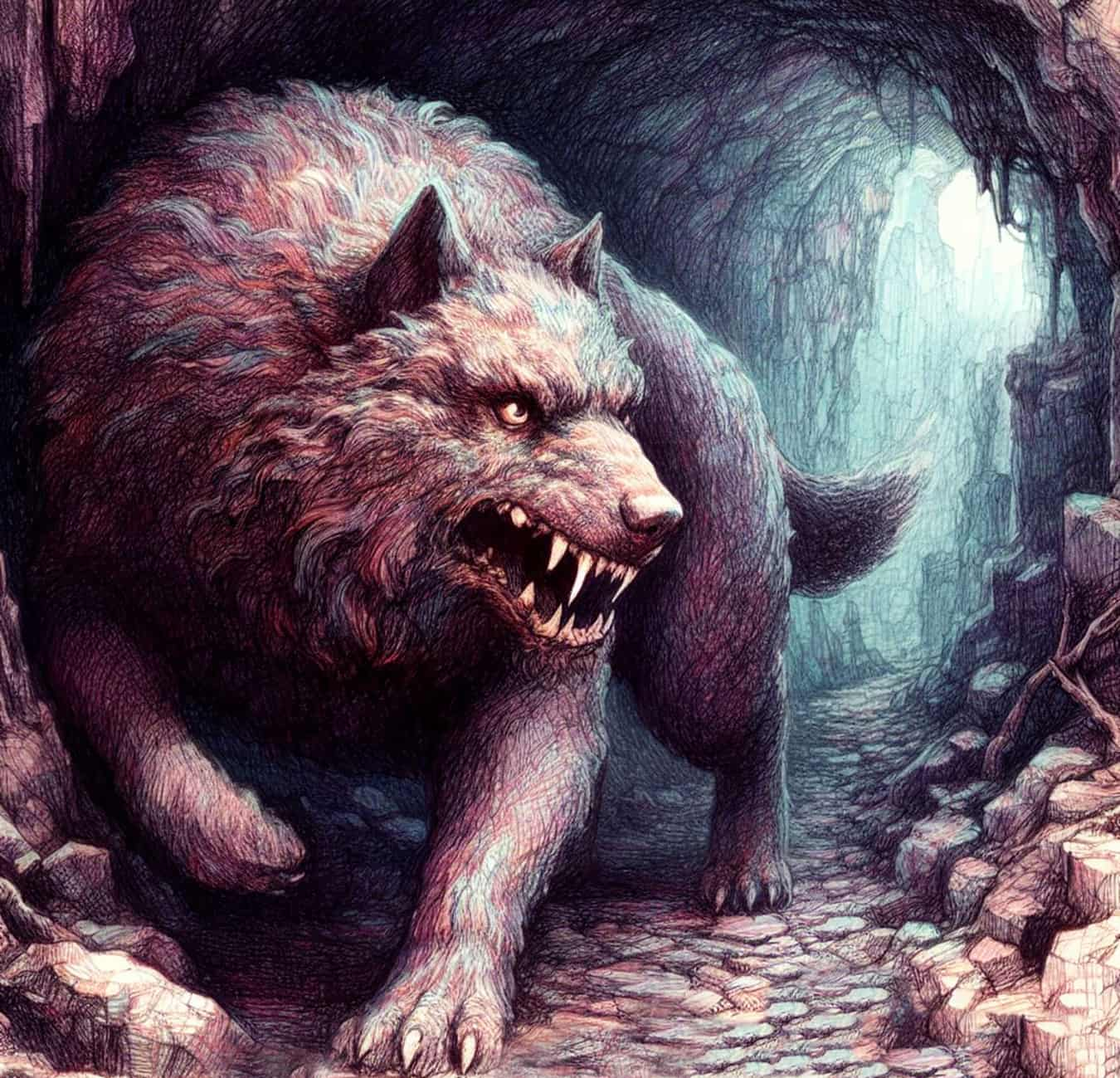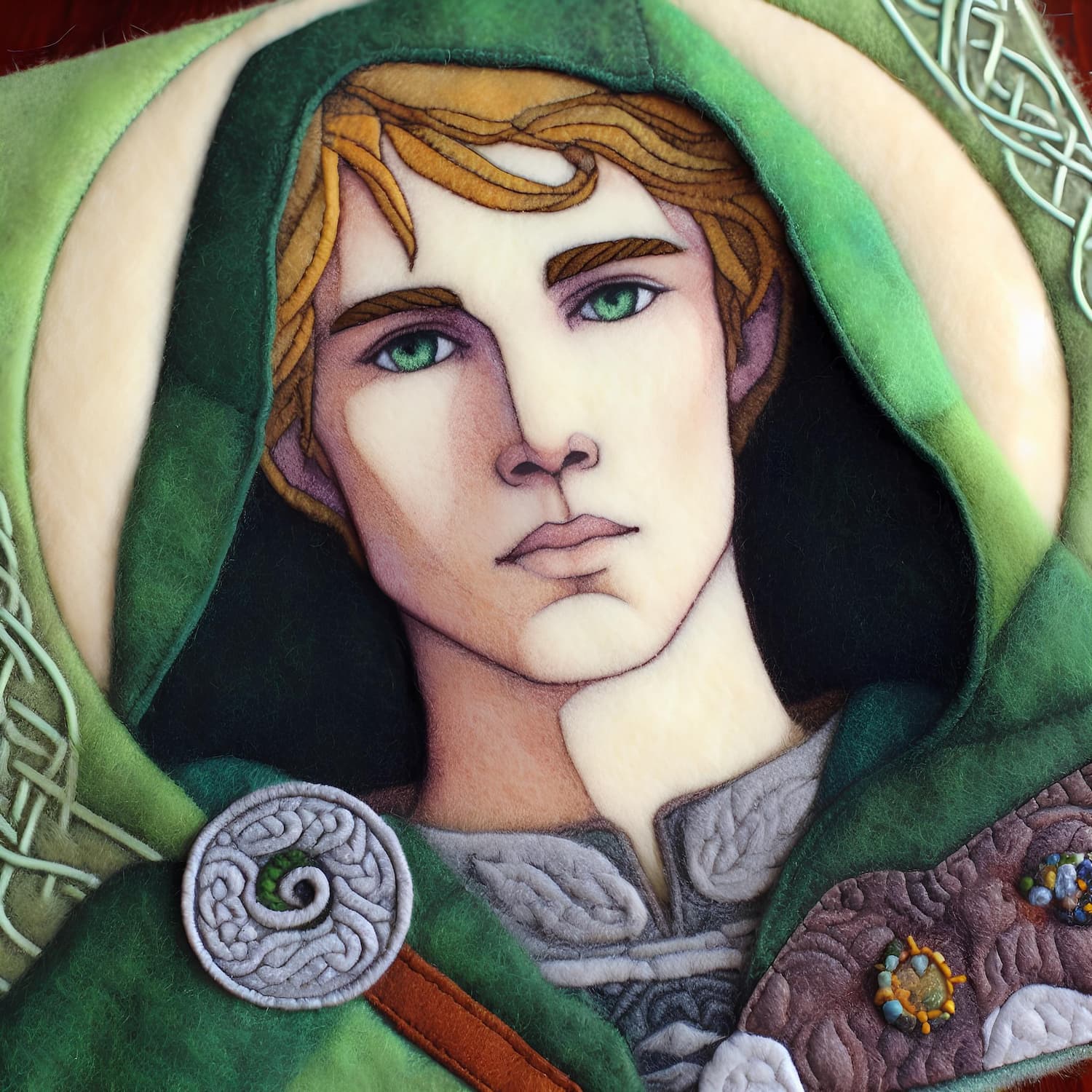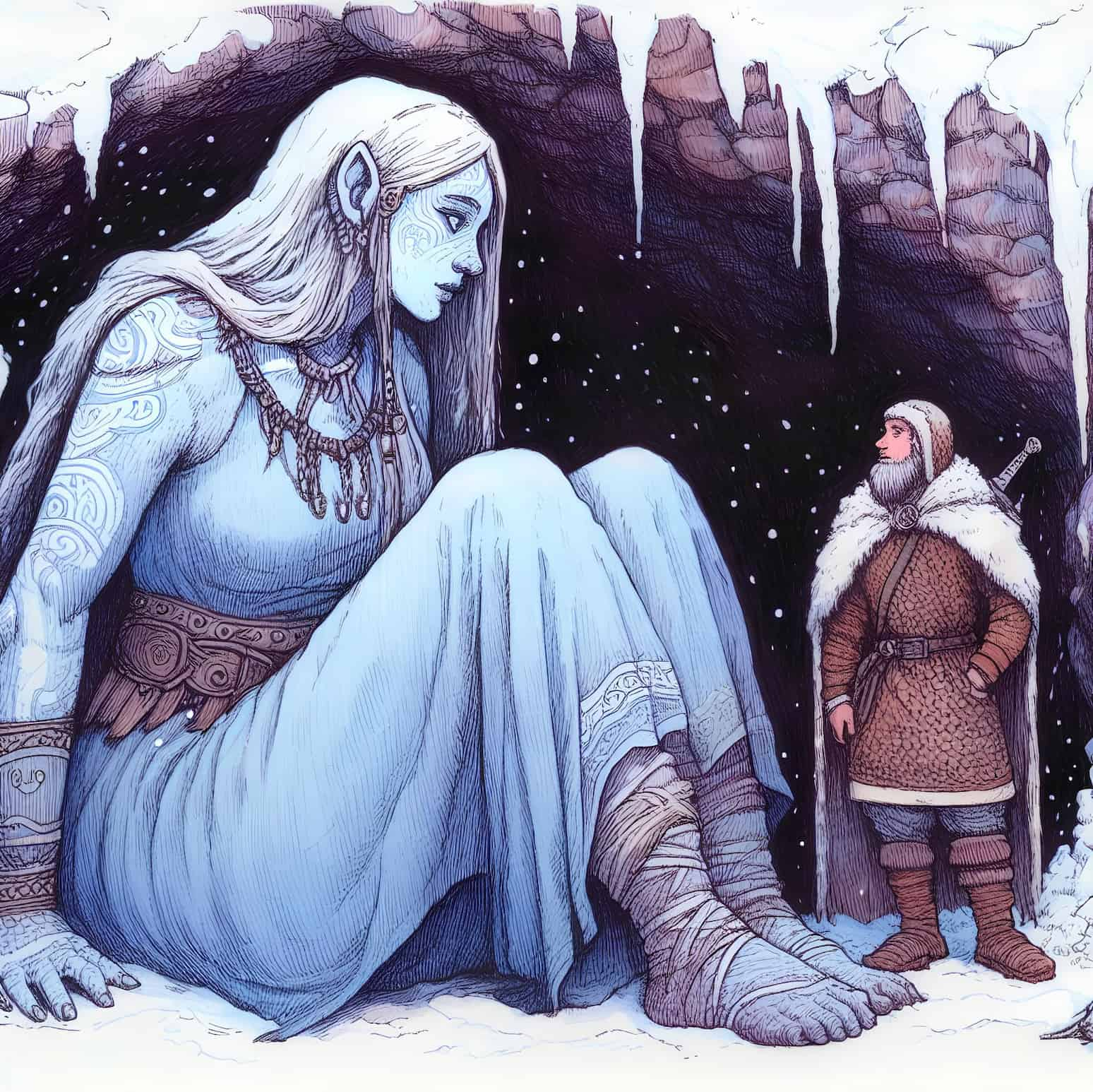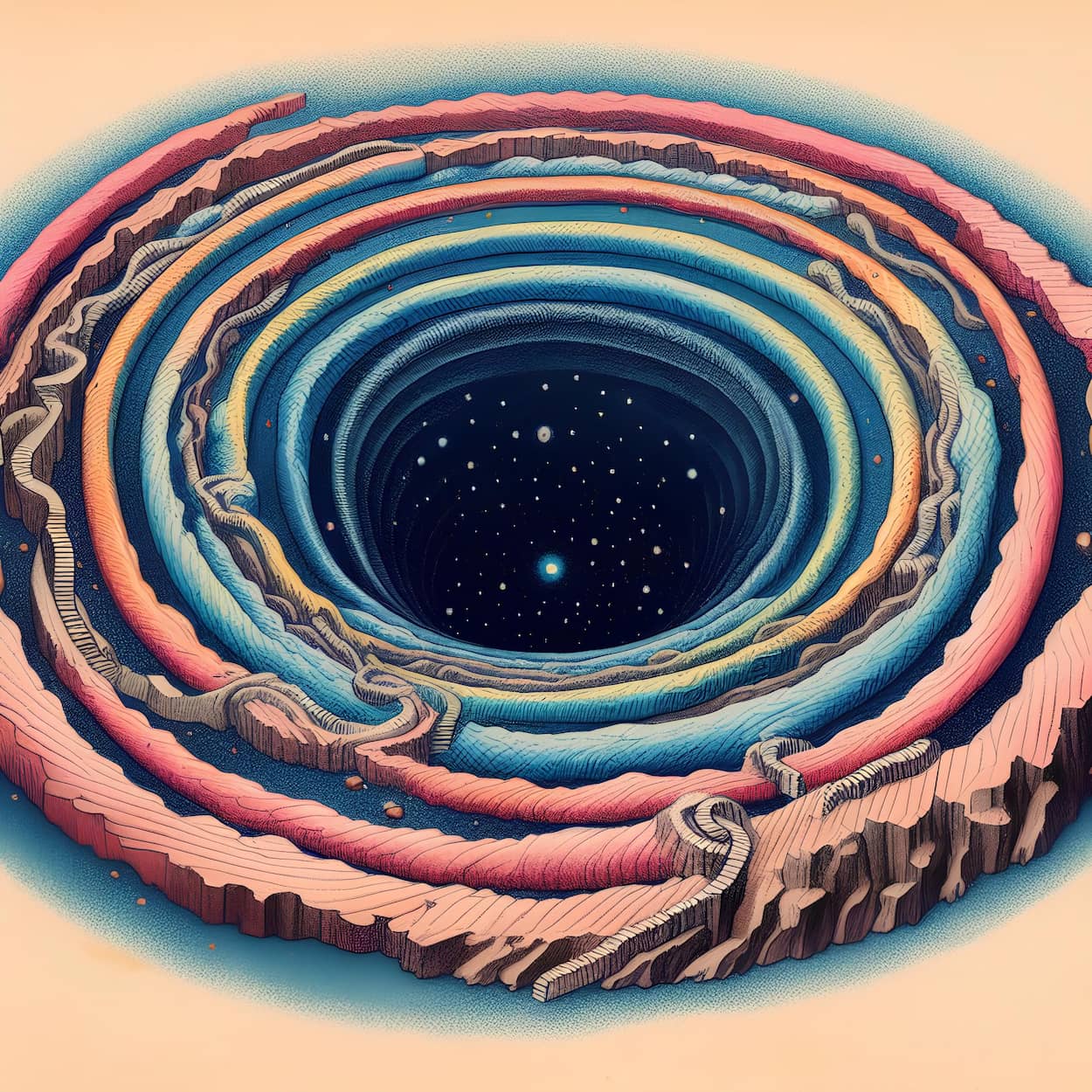- Guardian of Hel: Garmr, in Norse myth, guards the underworld’s entrance.
- Mythical Dogs: Various mythologies feature dogs guarding afterlife realms.
- Modern Depictions: Garmr appears in literature, music, and video games today.
Garmr (from Old Norse) is the dog that stands watch over the portal to Hel, the Nordic underworld, in Norse mythology. In Norse mythology, Garmr represents a vision of the Last Days.
Cerberus, the ancient Greek mythological dog associated with Hel, might have had a part in the origin of Garmr. Guarding the entrance to the underworld at the river Gjöll is Garmr, the dog of the death goddess Hel, who resides in the cave Gnipahellir (literally “overhanging cave”).
Origin of the Garmr Myth
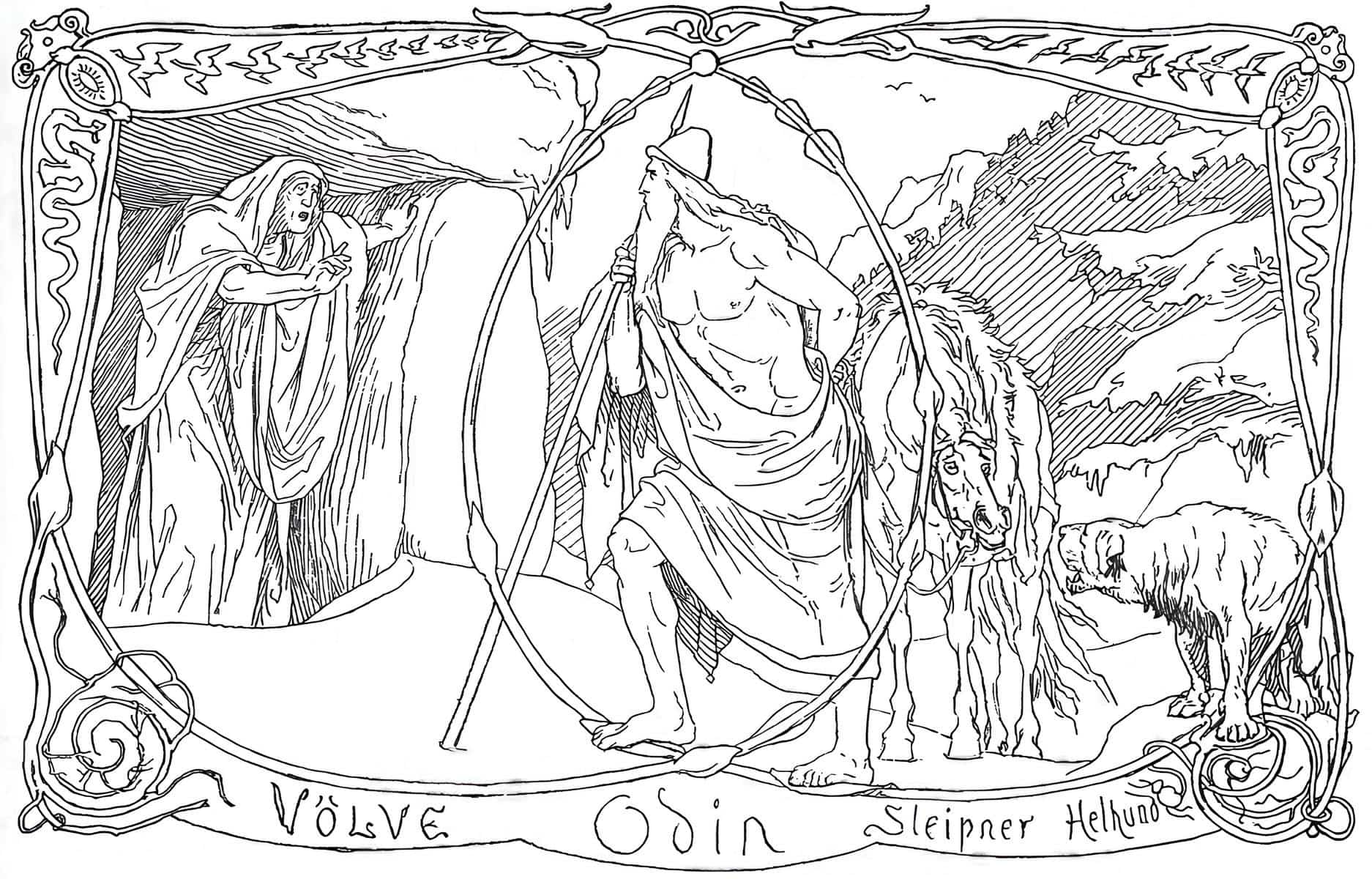
If you try to get close to the underworld, he will attack you. On the way to Niflheim, Odin runs into him. On the day of the end of the world (Ragnarok), Garmr will let out a terrible howl and join the giants in their battle against the Aesir. Both Garmr and Tyr are going to die in that battle. Garmr is a name that some writers have used interchangeably with Fenrir, the great wolf of Norse mythology.
However, the ancient Icelandic poets rarely used the character Garmr, due to the abundance of mythical animal figures.
The island Lyngvi, where Loki and Fenrir are bound in the cave Gnipahellir, is guarded by Garmr, a large dog that cries loudly when the shackles of Loki and Fenrir threaten to burst before the approaching apocalypse, according to the Völuspá, the first poem of the Codex Regius, written about 1000 AD:
Now Garmr howls terribly,
in front of the Gnipahellir,
the fetters will break,
and the wolf will run.
Poems from the Icelandic Poetic Edda, which were originally passed down orally, were written down in the 13th century. In verse 44 of the Grímnismál (also known as Grimnir’s Song), Garmr is called the “Best of hounds.”
In this verse, Odin describes the greatest of the legendary world, beginning with the tree Yggdrasil and continuing through the Aesir, the horse Sleipnir, and ending with the dog Garmr. In Baldrs Draumar, another section of the Poetic Edda, Odin is followed by a blood-spattered hound that barks loudly the whole way to Niflheim, the underworld.
However, this dog remains unidentified and its relationship to Garmr is unproven.
Story of Garmr in Norse Mythology

In the Gylfaginning, the heart of Snorri Sturluson’s Prose Edda, the author dubs Garmr “the greatest monster” and provides a detailed account of the apocalyptic battle of Garmr and Tyr in front of the cave Gnipahellir, where both Garmr and Tyr ultimately perish. The presence of the chains suggests a connection to Fenrir.
In the Gylfaginning, Garmr is mentioned once more, this time as the wolf Managarmr (Moon-Hound) or Hati Hródvitnisson, the destroyer of the moon, who feasts on the flesh of the dead and, during the apocalypse (Ragnarok), stains the seat of the gods with blood as he and his brother Skoll eat the sun and moon.
The destructive character of Garmr is described in further detail by other kennings, such as “Garmr of the wood,” which represents fire, in certain Old Norse poetry.
Dogs, also called Garmr, protect the lovely castle Menglod in the 13th-century poetry Fjölsvinnsmál. According to some poetry, the only way to please Garmr is with bread that has been given to a beggar.
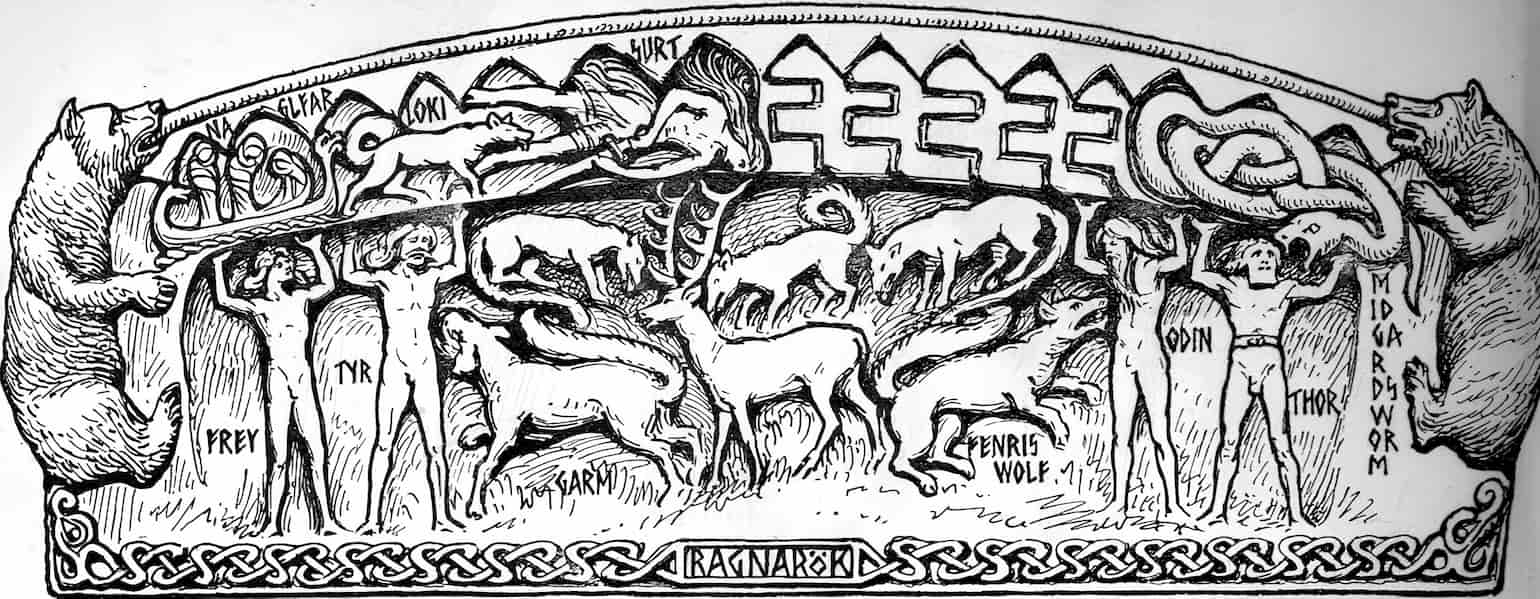
Dogs Similar to Garmr in Other Mythologies
Cerberus vs. Garmr
Numerous mythologies include dogs as guardians of Hades or the afterlife. There are canine or canine-like animals with names in Greek mythology. Cerberus, a two- or multi-headed dog with a dragon or snake tail, is the counterpart of the Norse Garmr, guarding the entrance to Hades and ensuring that the souls of the dead can never depart.
In Greenlandic Mythology
After an unsuccessful seal hunt, the Greenlandic Inuit shaman (Angakkuq) goes to the ocean floor to beg Sedna, the sea goddess, to let the seals go free. However, to reach her, one must go through the afterlife, across an abyss guarded by a great dog, and over yet another abyss on a bridge as thin as a knife.
In Slavic Folklore
The goddesses of the morning light, known as Zorya, appear in Slavic mythology. The gate to the sun’s daily voyage across the sky is opened by the morning dawn (Zorya Utrennyaya) and closed by the evening dawn (Zorya Vechernyaya) upon the sun’s return.
Another Zorya, this one signifying midnight, was added to the mythology in subsequent retellings. The three sisters are responsible for keeping an enslaved dog from the constellation Ursa Minor from escaping, should the planet be destroyed.
An Updated Look at Garmr
- Farmer Giles’ dog Garmr appears in J.R.R. Tolkien’s “Farmer Giles of Ham.“
- The human-eating, Christian-blood-craving Garmr is the subject of the song “Helvetes Hunden Garmr” by the Norwegian folk-metal band Trollfest.
- Garmr is a companion animal of Eir, a ranger who plays a significant part in the player’s adventure as a member of Destiny’s Edge in the massively multiplayer online role-playing game Guild Wars 2.
- Senua, the game’s protagonist, must work her way through a maze-like tunnel vault to reach the end of Hellblade: Senua’s Sacrifice. When she needs to flee into the darkness, she is constantly followed by a huge creature known only as Garmr. Garmr can’t get to her in the light, so that’s her only hope.
- In addition to his appearance in God of War, Garmr plays a pivotal role in the events of God of War: Ragnarok.buy amoxicillin online https://petlosshelp.net/memorialhalloffame/html/amoxicillin.html no prescription pharmacy


